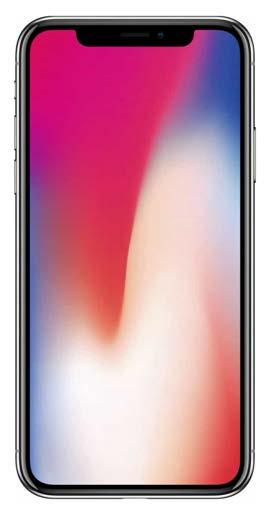
3 minute read
WATCHTHEVIDEO
The 3D Clockface shows the Arm Slot and Spin Direction of the ball plus a 3D view of the Spin Axis, seam orientation and Last Touch.
Why it matters
Advertisement
A pitcher’s body, arm, and hand movement work together to determining how a pitch will behave. The 3D Clockface display highlights some of the most important relationships in an easy-toread graphical form.
One of the fundamental characteristics of an individual pitcher’s style is their Arm Slot. A consistent Arm Slot is an important starting point for building command and consistency. It’s also important for concealing different pitch types from the batter.
Your Arm Slot has a large impact on how you are able to create spin and movement. For a fastball, Spin Efficiency will generally be highest when the Arm Slot and Spin Direction are closely aligned. For breaking balls, the highest Spin Efficiency is possible when the Spin Direction is about 180 degrees away from the Arm Slot.
Adding the 3D view of spin gives a more complete picture of how the ball is spinning in space. This allows you to see if the spin is tilted or off axis, which will lower Spin Efficiency and in turn reduce Movement. With 100% Spin Efficiency you will see only the edge of the blue ring, which will start to look like a line. As Spin Efficiency is reduced, more of the ring will be visible. This will form an oval or a hoop. A pitch with 0% Spin Efficiency will appear as a perfect circle.
The Last Touch point and path allow the pitcher to see how their grip and release create the spin on the ball. For example, a pitcher with a low Spin Efficiency on their fastball may see that their Last Touch traces from behind the ball to the side of the ball at release instead of staying behind it, which creates unwanted Rifle Spin.
Typically, the motion of the fingers will lead directly into the Spin Direction of the ball. This can be seen with the relationship between Last Touch and 3D spin.
How to use it

The 3D Clockface gives a quick and easy way to see how Arm Slot and release affect Spin Direction and Spin Efficiency. This allows players and coaches to make small adjustments after each pitch and immediately see the results without breaking their rhythm.
Fastball:
If a pitcher is working on improving their fastball’s Spin Efficiency, a separation between the Spin Direction and Arm Slot arrows can indicate cutting the ball. As the pitcher works on keeping their fingers behind the ball through release, watching the blue arrow move toward the yellow arrow is a good gauge of progress. If using the 3D Clockface, the blue spin ring and the Last Touch point give an even more direct view of what’s causing a lower Spin Efficiency.
Breaking ball:
For a breaking ball, Arm Slot has a large impact on the shapes of breaking balls that will be possible. A higher
Arm Slot (closer to 12:00) allows a pitcher to create more Topspin and a more “12-6” or vertical breaking ball. Pitchers with a lower Arm Slot will be able to create more Sidespin and Horizontal Movement. Pitchers can also choose breaking balls that sacrifice maximum Spin Efficiency and movement to create different Spin Directions (such as a slider). With Last Touch, pitchers can see how their release creates different types of movement. If the Last Touch point is in front of the ball, it will typically create a Spin Direction opposite the Arm Slot with a relatively high Spin Efficiency. If the Last Touch point is to the side of the ball, the Spin Efficiency will decrease, and the Spin Direction will move back toward the Arm Slot.
The distance, flight time and angle of approach of the ball where it is projected to hit the ground. These metrics can be obtained by throwing a ball into an elevated net at least 10 feet away.
What it is Why it matters How to use it

pitchLogic plus and pitchLogic pro include a collection of features allowing players to practice long toss in an indoor setting. A player can throw a ball into a net at least 10 feet away and pitchLogic will provide metrics on projected distance, flight time, and approach angle. When throwing long toss you still receive the full array of pitchLogic metrics with each throw.
Long toss is an important element of a lot of training programs. However, doing long toss outside can be a challenge due to weather, facilities, or access to enough space. Long toss has historically required two people, a large outdoor space, good weather, and a long measuring tape. Another challenge with traditional long toss training is that it is difficult or impossible to capture metrics on those throws. pitchLogic allows players to throw long toss indoors at their training facility or even at home and you can dial in the exact throwing distance you are targeting.
You don’t need to activate any special mode within pitchLogic to capture long toss data. Come set then throw the same way you would outdoors (use a high release angle) but into a net as close as 10 feet away. The ground tab of the pitchLogic app provides details on where the ball would have hit the ground if you were throwing outside. In addition, you can use the rest of the pitchLogic metrics to measure your throwing mechanics and spin data. You may want to keep your arm slot and spin direction consistent with your pitching motion.

